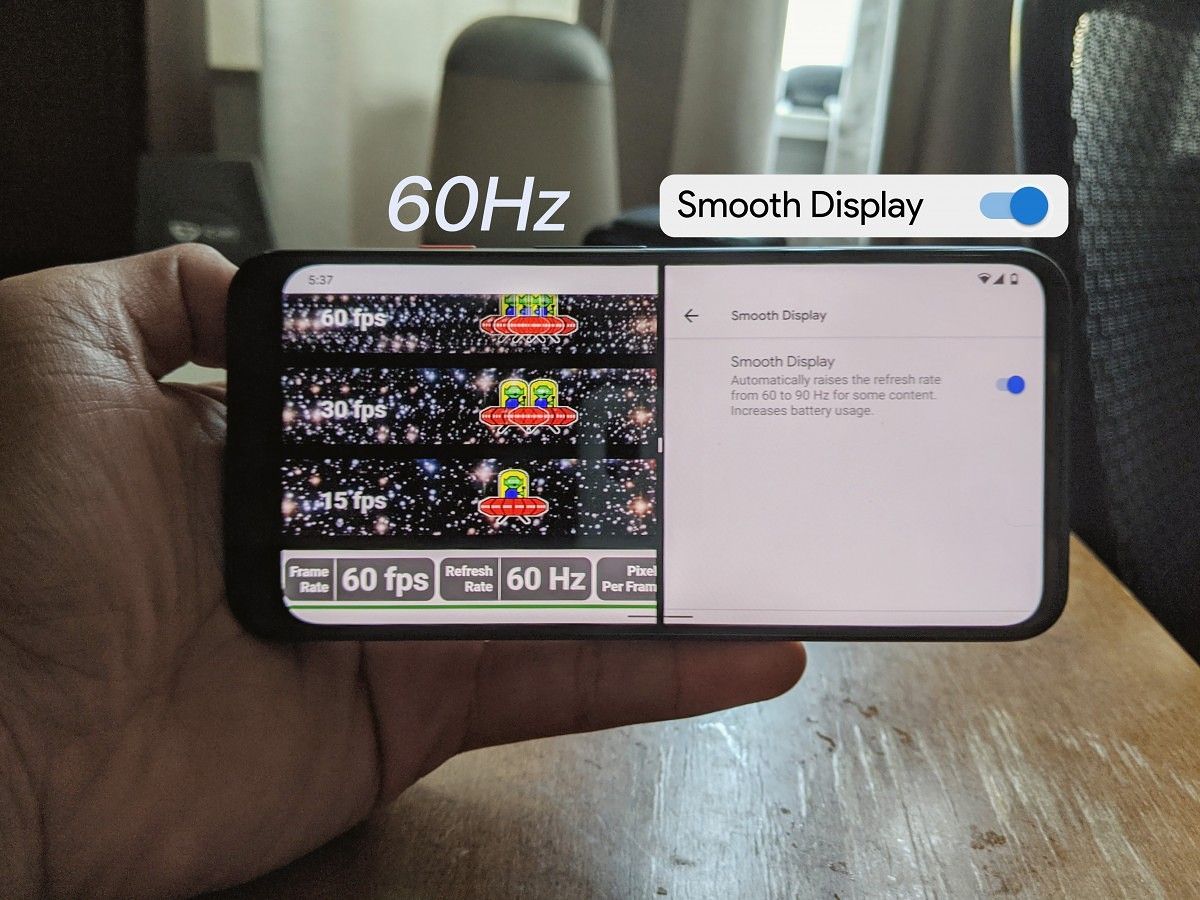Just recently, a keen Reddit user figured out that the 90Hz "Smooth Display" on the Google Pixel 4 only stays at 90Hz during high brightness levels. Many early Pixel 4 adopters were able to notice that the display did not seem to stick to 90Hz very often, and this system behavior seems to have been the reason why. Naturally, some users were outraged about the matter, and some were curious about why Google would implement one of their products' biggest features in this peculiar way. Many people believed the reason had to do with battery life, but that didn't really make any sense -- why would 90Hz be limited to higher brightness, when battery consumption is more of an issue? While digging through the updated Android 10 source code release coinciding with Pixel 4 launch day, XDA's Editor-in-Chief Mishaal Rahman found a commit that explains the official reason why Google enabled this behavior:
Google says that the reason they limit 90Hz to higher brightnesses on the Pixel 4 is that a screen flicker may be visible as the refresh rate changes, especially when display brightness and ambient brightness are low. This is because the display does not support a true dynamic/adaptive refresh rate, and different refresh rates require different display gamma curves (calibration). The different gamma curves are difficult to perfectly match, so the difference may be noticed when switching between the two refresh rates.
Google's Smooth Display system keeps the display at 60Hz whenever the screen is idle or showing animation/video that is 60fps or less, and immediately switches back to 90Hz as soon as you touch the display or an on-screen animation (like a notification) occurs, so it switches between 90Hz and 60Hz very often -- a slight flicker upon every switch may indeed become annoying. Furthermore, Google states that we are more sensitive to the flicker in darker viewing environments. This is because the difference in calibration is more dramatic for darker shades, which are more visible under darker viewing environments.
Google released a statement to The Verge that the company "constantly assess whether these parameters lead to the best overall user experience," and that they have "previously planned updates that [they'll] roll out in the coming weeks that include enabling 90hz in more brightness conditions." For now, users can force 90Hz all the time by enabling that setting within the Developer Options. Forcing 90Hz keeps the display at 90Hz, so there is no screen flicker since it does not switch from 60Hz. However, this takes a toll on the phone's battery. Hopefully, Google can improve the tuning, and perhaps provide an option to completely disable their brightness-conditioned throttling so we can still enjoy some of the battery savings despite potential screen flickers.

